Once a plant has made seeds ( remember pollination and fertilisation? ) they need to be dispersed.
Seed dispersal is the scattering of seeds. If seeds just dropped next to the parent plant, they would be competing for nutrients and light, so it's better if seeds are spread out, allowing them to grow with less competition from other plants.
There are several mechanisms of seed dispersal depending on the plant or tree the seed is from.
Seed Dispersal Mechanisms
Wind dispersal of seeds
Dandelions have parachutes to help them catch the wind.
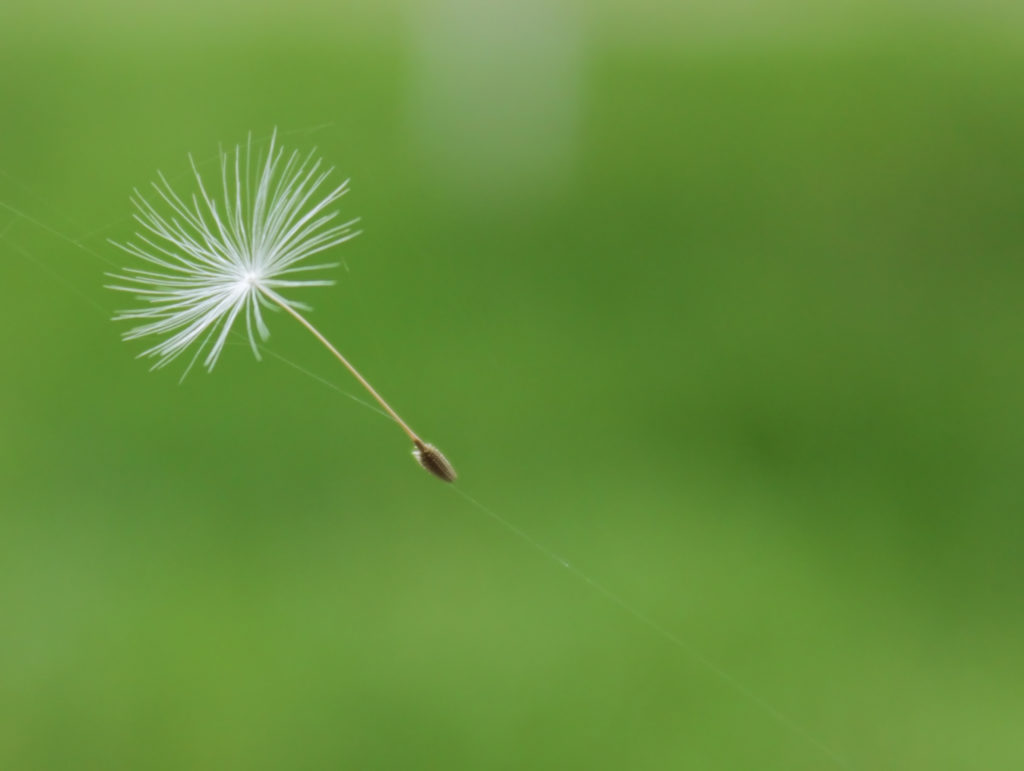
Sycamore seeds have wings to help them float.
Animal dispersal
Animals are very helpful when it comes to seed dispersal.
Seeds covered in tasty flesh are eaten by animals which poo the seeds out far from the parent plant.
Some trees have sticky seeds which attach to the fur of an animal and fall off as the animal moves around.
Trees such as oak and hazel trees take advantage of the hoarding nature of animals like squirrels. Not all the nuts are eaten; some are left behind to grow into new trees!
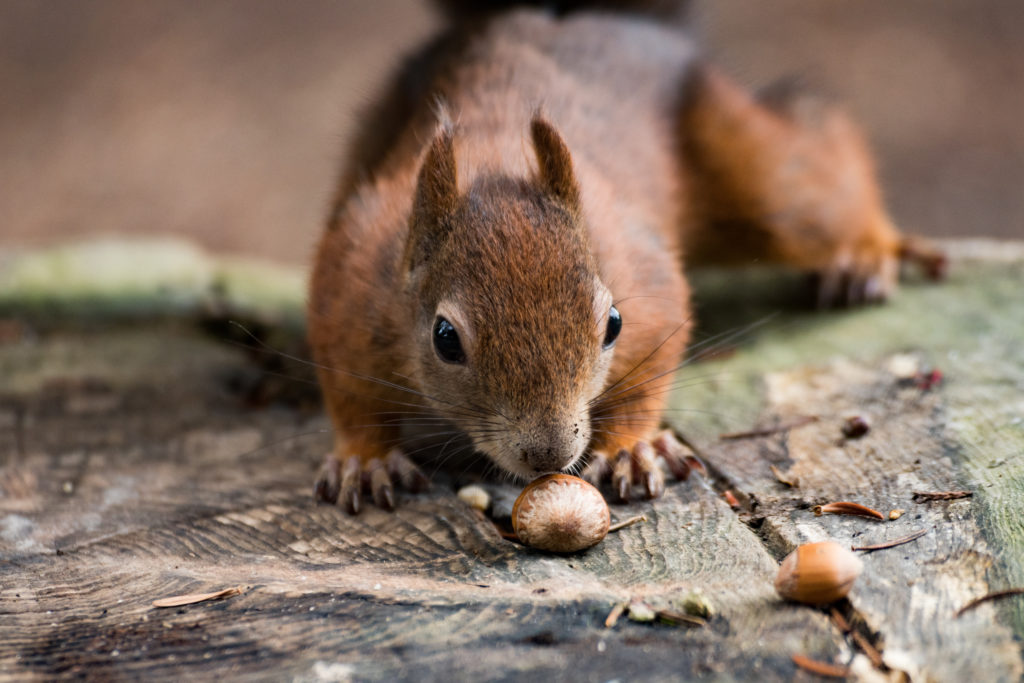
Water dispersal
Willow and alder trees often live near a source of water, they drop the seeds into the water which then float away.
Exploding seeds
Peas, lupins and violas spread their seeds by exploding them out of pods! This clever mechanism means the seeds shoot far from the parent plant and doesn't rely on animals or other factors.
Seed Dispersal Activity Sheet
The sheet below can be printed and used for reference or could be cut up and used as a matching activity.
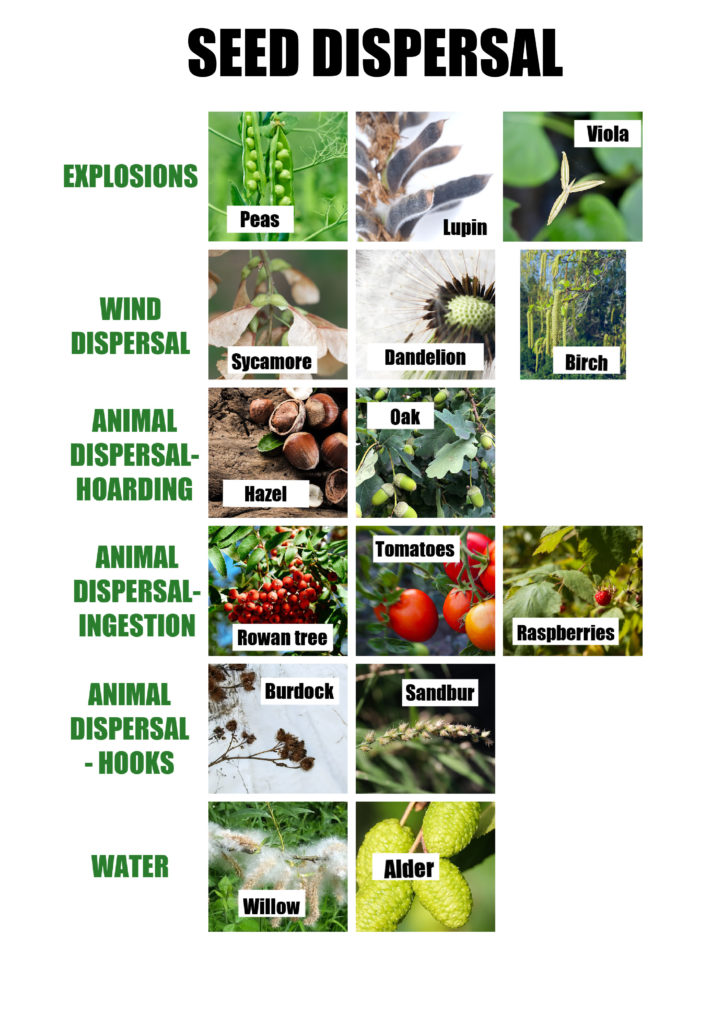
Make an exploding seed pod
Ballistic or explosive seed dispersal is perhaps the most fascinating of seed dispersal mechanisms. The explosive pressure is generated as the seed pods dry out.
A squirting cucumber is one example of a plant which uses this mechanism. Once the fruit of the squirting cucumber matures, it explosively ejects the seeds.
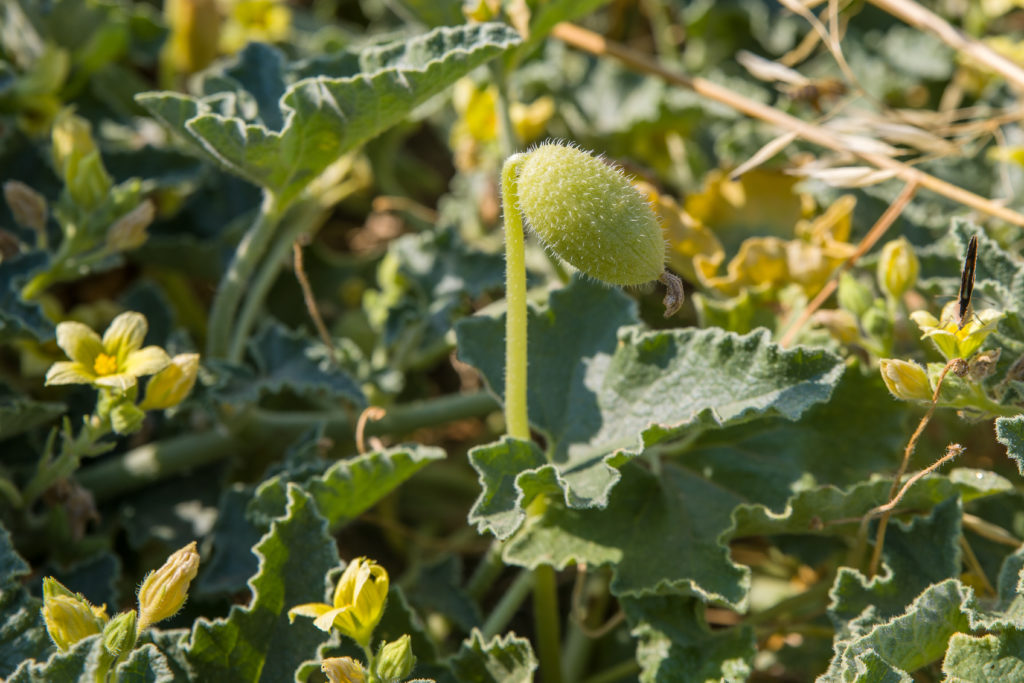
Make your own exploding seed pod
It's not quite the same mechanism, but you can explode pretend seeds from a cup to demonstrate the process of how this mechanism shoots seeds away from the parent plant.
You'll need
A paper cup with the bottom cut off.
A balloon with the end tied and the top removed.
Small pompoms
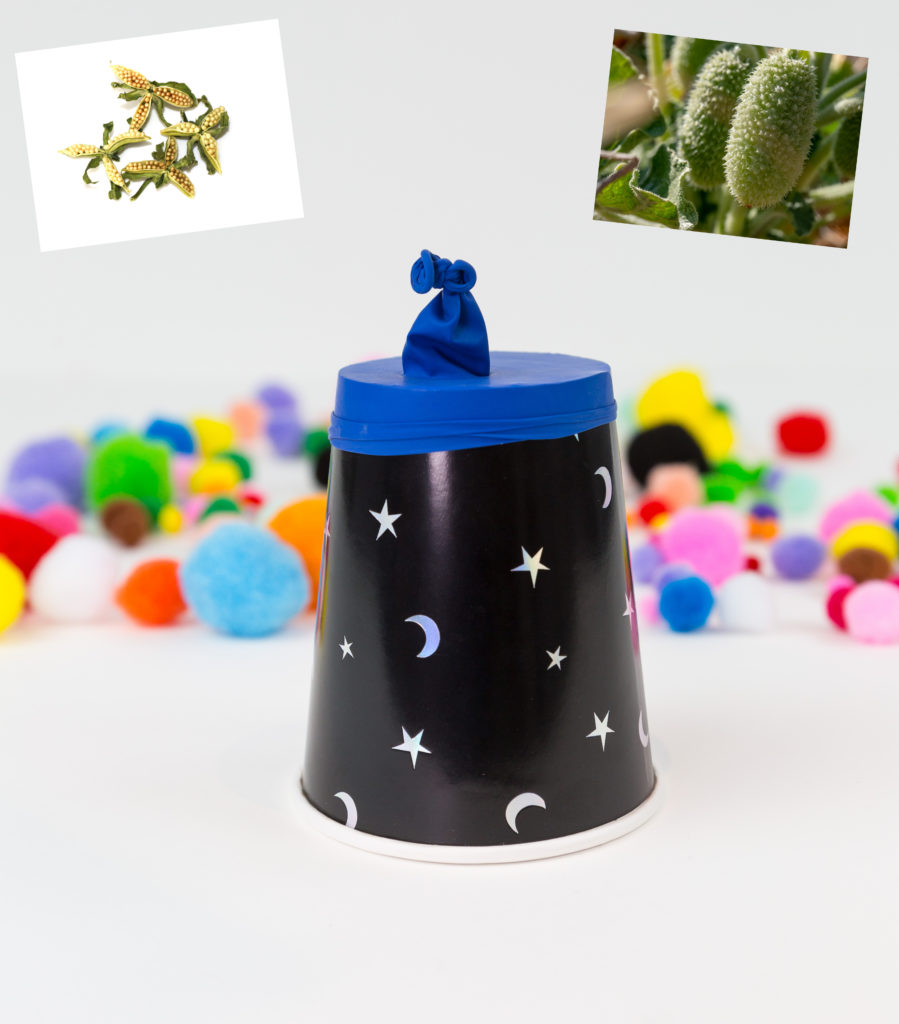
How to make an exploding seed pod
Attach the balloon to the bottom of the paper cup, like in the image above. If it slips off, try securing it with an elastic band.
Fill the cup with pompoms or other small light items, pull back the balloon end and release.
The pompoms should shoot out like exploding seeds.
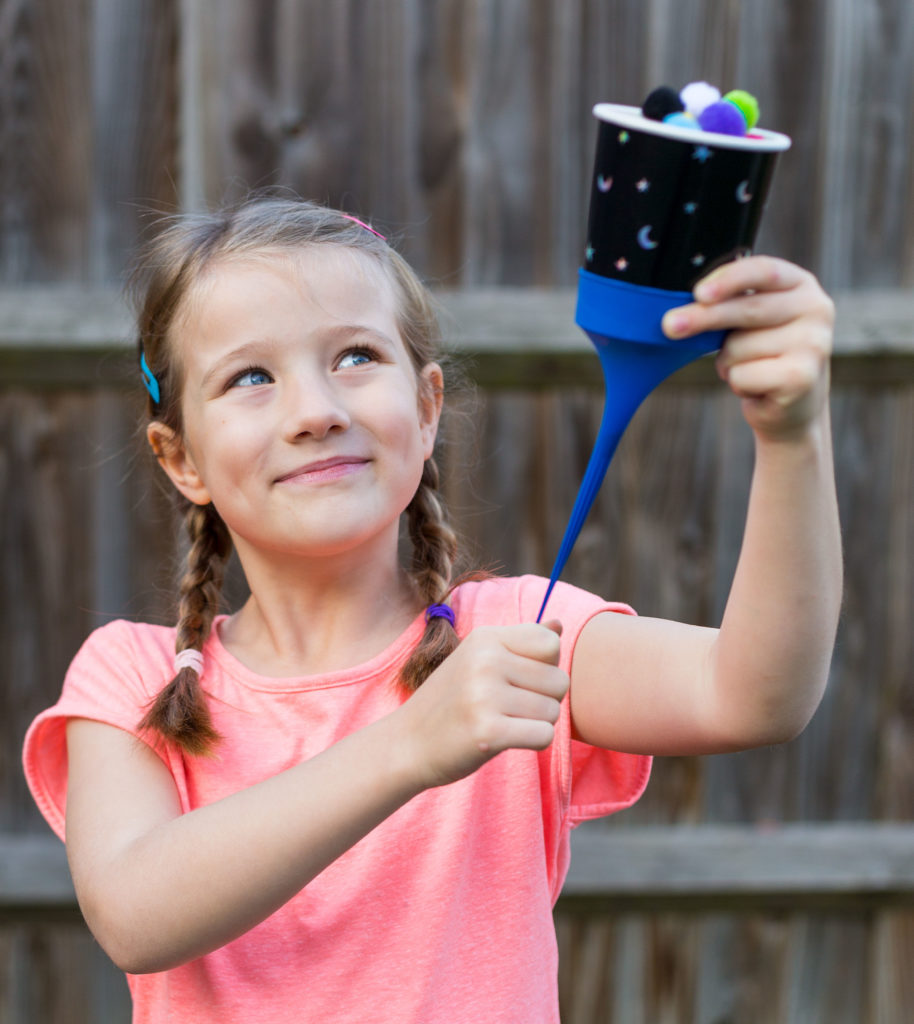
Experiment with holding the cup at different angles and using different amounts of pompoms.
How far can you make your seeds spread?
Can you design a different seed explosion device?
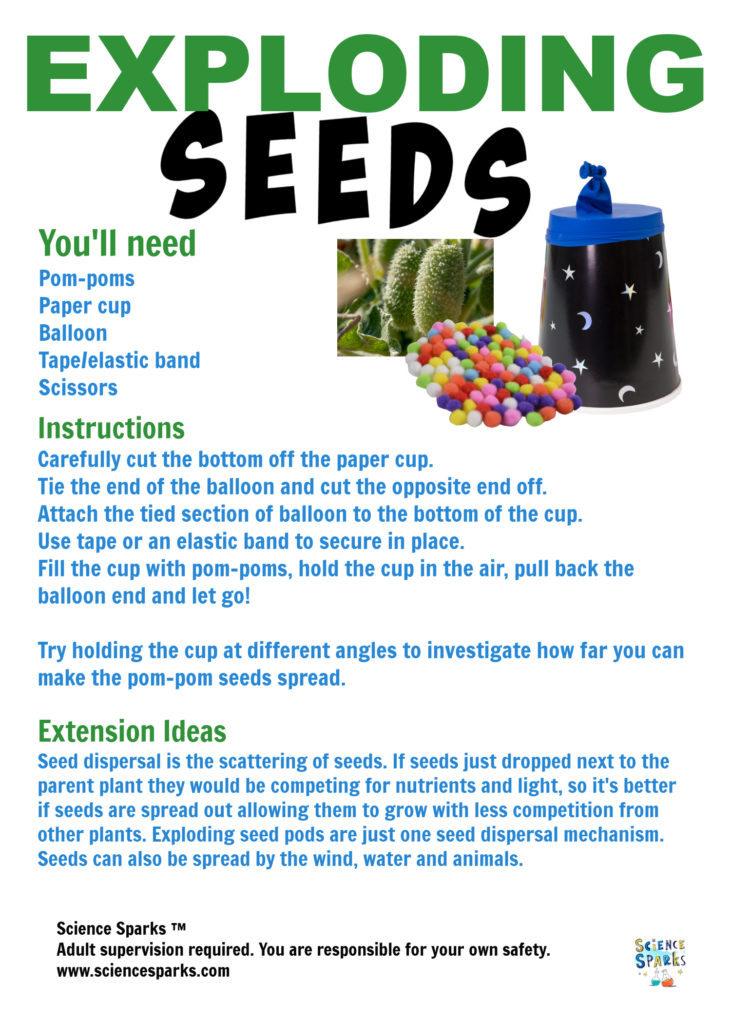
More plant science activities
Dissect a flower ( lilies work well ) to learn about the different parts.
The Woodland Trust has lots of advice and tips for identifying different trees.
Royal Baloo has a great playdough seed activity.
Build your own sticky seed pod. This is great for learning about animal dispersal.
Make a 3D model of a flower.
This activity was also used for a Popping Planet investigation in This IS Rocket Science.
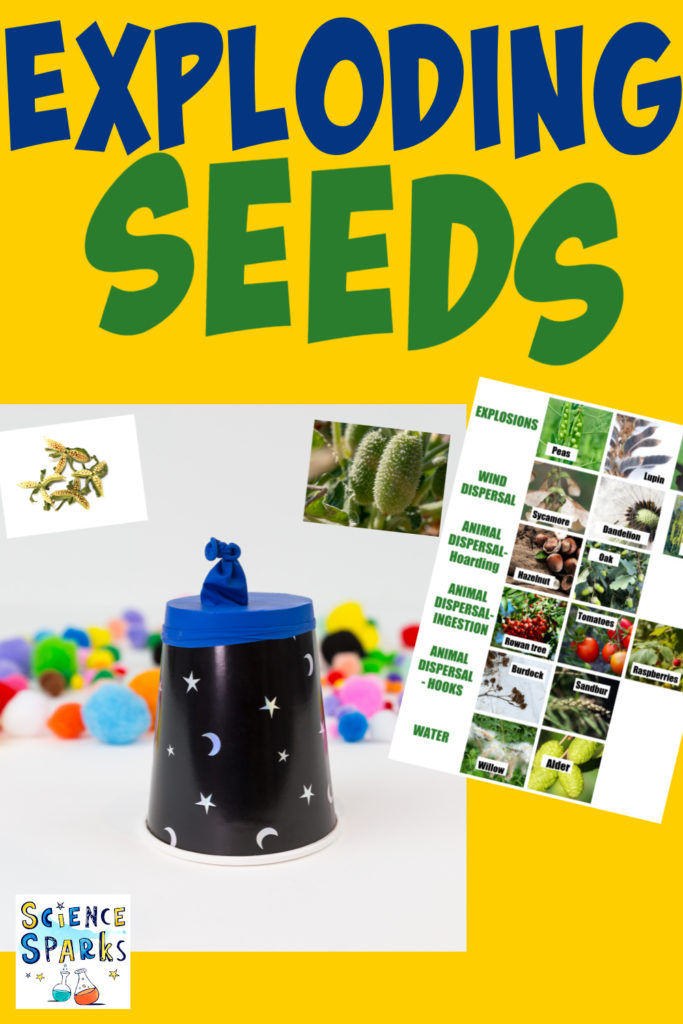
Last Updated on October 8, 2024 by Emma Vanstone
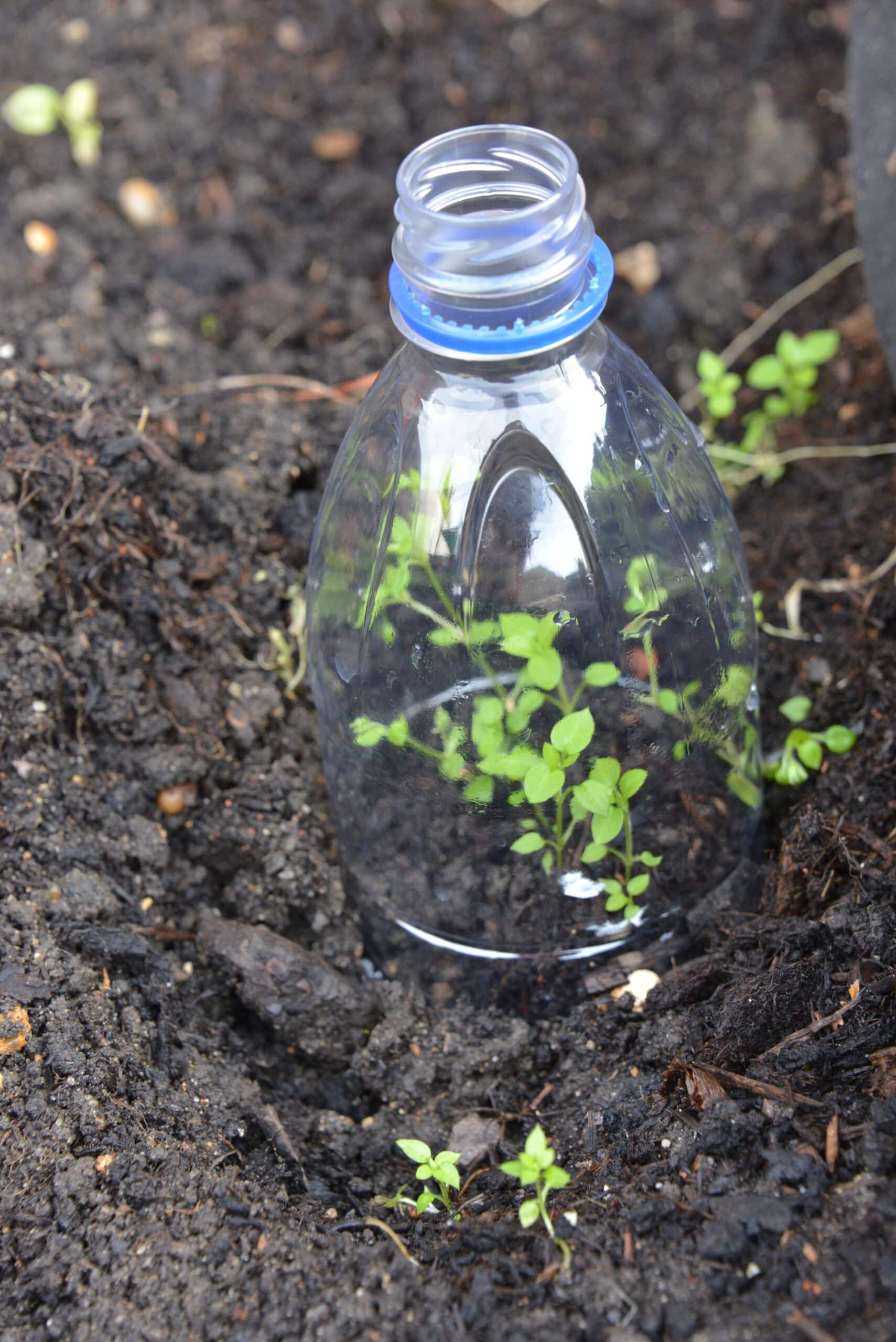

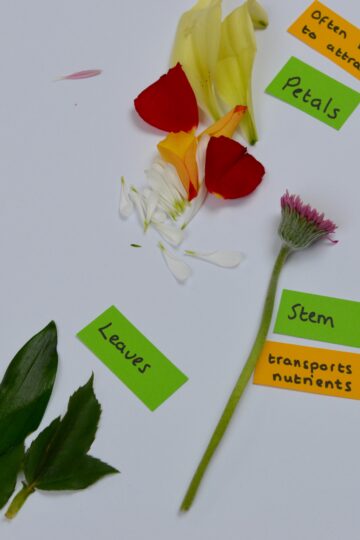
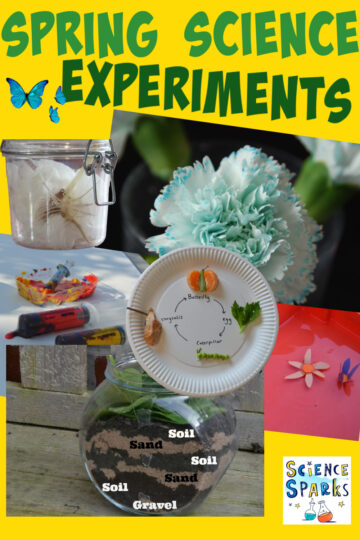
Leave a Reply